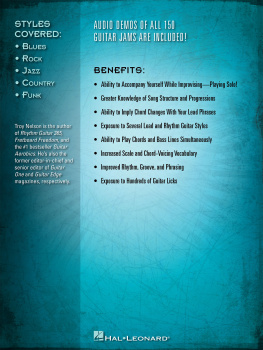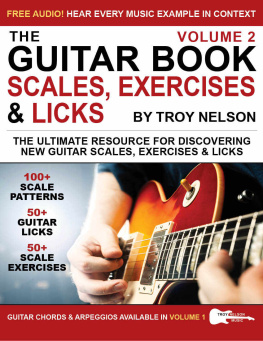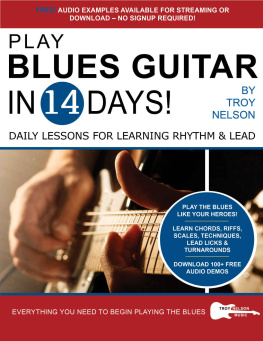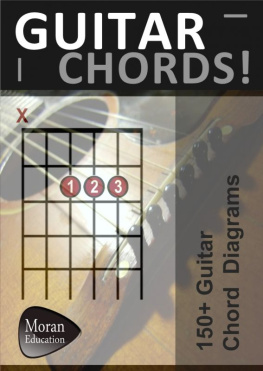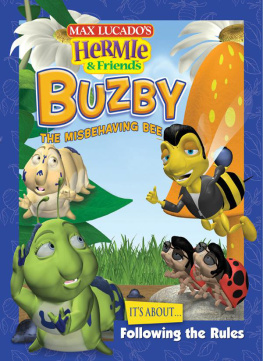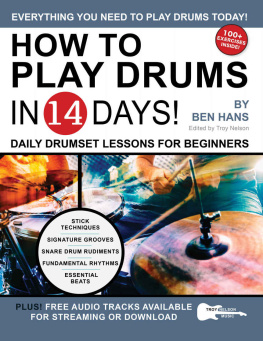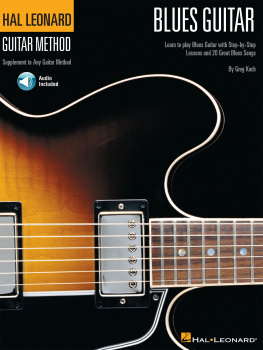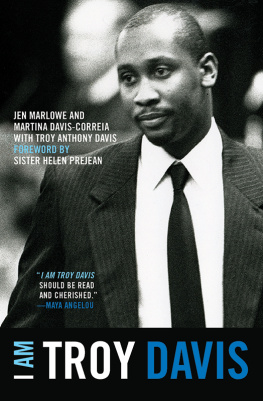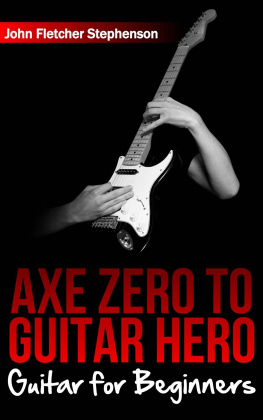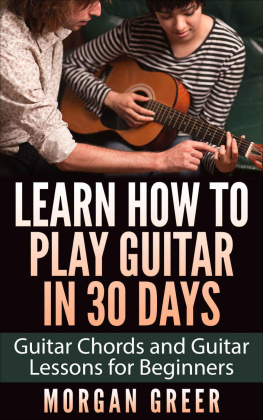Troy Nelson - One-Man Guitar Jam
Here you can read online Troy Nelson - One-Man Guitar Jam full text of the book (entire story) in english for free. Download pdf and epub, get meaning, cover and reviews about this ebook. year: 2014, publisher: Hal Leonard, genre: Children. Description of the work, (preface) as well as reviews are available. Best literature library LitArk.com created for fans of good reading and offers a wide selection of genres:
Romance novel
Science fiction
Adventure
Detective
Science
History
Home and family
Prose
Art
Politics
Computer
Non-fiction
Religion
Business
Children
Humor
Choose a favorite category and find really read worthwhile books. Enjoy immersion in the world of imagination, feel the emotions of the characters or learn something new for yourself, make an fascinating discovery.
- Book:One-Man Guitar Jam
- Author:
- Publisher:Hal Leonard
- Genre:
- Year:2014
- Rating:4 / 5
- Favourites:Add to favourites
- Your mark:
- 80
- 1
- 2
- 3
- 4
- 5
One-Man Guitar Jam: summary, description and annotation
We offer to read an annotation, description, summary or preface (depends on what the author of the book "One-Man Guitar Jam" wrote himself). If you haven't found the necessary information about the book — write in the comments, we will try to find it.
Troy Nelson: author's other books
Who wrote One-Man Guitar Jam? Find out the surname, the name of the author of the book and a list of all author's works by series.
One-Man Guitar Jam — read online for free the complete book (whole text) full work
Below is the text of the book, divided by pages. System saving the place of the last page read, allows you to conveniently read the book "One-Man Guitar Jam" online for free, without having to search again every time where you left off. Put a bookmark, and you can go to the page where you finished reading at any time.
Font size:
Interval:
Bookmark:
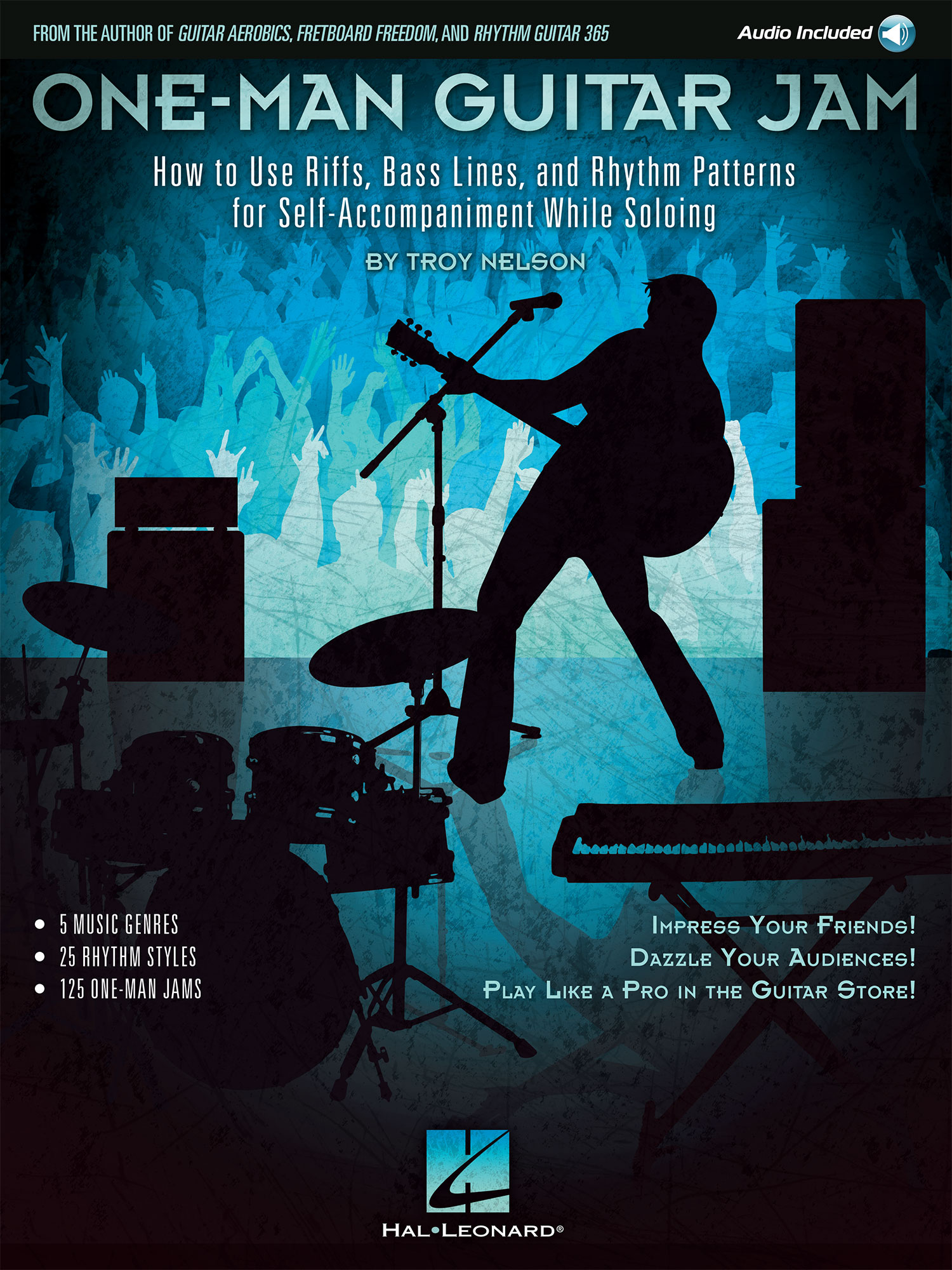

ISBN 978-1-4950-0046-1

7777 W. Bluemound Rd. P.O. Box 13819 Milwaukee, WI 53213
Copyright 2014 by HAL LEONARD CORPORATION
International Coyright Secured All Rights Reserved
In Australia Contact:
Hal Leonard Australia Pty. Ltd.
4 Lentara Court
Cheltenham, Victoria, 3192 Australia
Visit Hal Leonard Online at
www.halleonard.com
Picture this: You walk into a music store, ready to test-drive some of their shiny new guitars. The place is packed with other guitaristsones playing Stairway to Heaven, ones playing Enter Sandman, and another is butchering a blues lick that he just learned at last weeks guitar lesson. Each is competing for sonic space, yet no one is really distinguishing himself. Or this: Your relatives are visiting for the holidays. They heard youve been taking guitar lessons and want to hear you play. Or perhaps youre hanging out with a group of friends and want to impress them with your chops. The question in each of these scenarios is this: What are you going to play? How do you stand out among the din of the guitar shop? How do you dazzle your relatives or peers?
Weve all experienced these types of scenarios, and there really is no right or wrong thing to play. If your audience is fellow guitarists, shreddin a few licks always goes over well. Strumming your way through a pop or rock tune will probably impress relatives and friends. But if you really want to stand outparticularly if youre at a music store, surrounded by a bunch of guitar playersnothing turns heads more than a guitarist who can switch back-and-forth between rhythm and lead, moving effortlessly between the two techniques within the structure of a songa guitarist who is able to accompany himself while outlining the chord changes with his lead phrases.
Self-accompaniment is a technique that lends sophistication to ones playing above and beyond what is attainable from playing lead or rhythm individually. Most people associate this type of playingsometimes referred to as solo guitarwith jazz, and rightfully so. However, self-accompaniment is not solely limited to jazz. In fact, self-accompaniment can be applied to any musical style, and thats exactly what youll find in One-Man Guitar Jam. This is not a solo-guitar book in the traditional sense, as the focus is not on a group of songs. Instead, the book focuses on five different genresblues, rock, jazz, country, and funkand introduces several popular rhythm styles (accompaniment) in each25 total.
No song melodies are involved; the focus here is strictly rhythm and lead playing and how to incorporate the two techniques into a cohesive performance, played over a set of chord changeswhether a simple 12-bar blues or more complex progressions like Coltrane Changes or Rhythm Changes, all of which are featured in One-Man Guitar Jam. Thats not to say that the lessons and musical examples in this book dont translate to traditional solo guitar (they do!); however, the focal point of the book is the myriad benefits of learning how to accompany oneself, including performing within the parameters of song structure, memorizing and internalizing a set of chord changes, keeping proper time, transitioning from lead to rhythm (and vice versa) on the fly, and implying harmonies via your lead phrases, among others. In short, self-accompaniment will take your playing to a whole new level.
The skill level required to perform the musical examples ranges from intermediate to advanced, with the music genres determining the level of difficulty more so than the books content, which is pretty consistent throughout. Naturally, the jazz examples are more challenging than, say, the country or blues figures, but with dedicated practice, all of the examples are playable. Consequently, you can jump into the book at any point, letting your musical interests determine how you proceed. If blues is your thing, you can start in Section I and work your way through the books first six chapters, which touch on everything from blues-based shuffles and bass lines to riffs and fingerpicking. If youre interested in learning some funk, go ahead and jump to Section V, where you can choose from a riff-based figure (Chapter 24) or a skank groove (Chapter 25). And, in between, youll find six rock styles (Chapters 712), seven jazz styles (Chapters 1319), and four country styles (Chapters 2023) from which to choose.
Each of the 25 chapters is subdivided into six Jams150 in all! The first Jam of each chapter introduces both the rhythm style (riff, bass line, picking pattern, etc.) and the song form, including the number of measures, the chord progression, and, if applicable, the sections. The second Jam of each chapter continuously alternates one bar of lead and one bar of rhythm. In the third Jam, the alternations are extended to two bars. Then, in the fourth Jam, the order is reversed, resulting in a rhythm/lead sequence, and the alternations are, once again, played as one-bar intervals. Like the lead/rhythm sequence, the fifth Jam extends the rhythm/lead alternations to two bars. Finally, in each chapters sixth Jam, the alternations are arranged randomly. Think of the random Jams as the desired outcome from practicing the structured one- and two-bar alternations. After all, the goal of self-accompaniment is to alternate between rhythm and lead parts spontaneously, rather than in predetermined one- or two-bar intervals. By practicing the alternations in all of these configurations, you will naturally begin to make the transitions on the fly.
Also included in each chapter is a Resources section, where youll find chord frames and scale diagrams. The chord frames are simply the chords that are utilized in the rhythm figure, or, in the case of the bass lines, the underlying shapes. Chord frames are a five-fret snap shot of the neck and can assist with fingerings and the performance of the examples, especially instances where the full chords are not struck (e.g., bass lines, fingerpicking patterns). Meanwhile, the scale diagrams represent the scales from which the lead phrases are derived. Like the chord frames, the diagrams help to visualize the scales construction and neck locations. They are also included as a resource for creating your own solo passages. Once youre able to play the phrases in each Jam, you can use the diagrams to manipulate the passages and create your own improvisations (see Creating Your Own Lead Phrases).
One-Man Guitar Jam is a performance-centric book. Sure, the instruction, chord frames, and scale diagrams will help, but its the music examples that are going to transform you into a more sophisticated guitarist. The only way to truly learn self-accompaniment is to practice self-accompaniment, and thats what youll be doing as you play through the various configurations of the lead/rhythm alternations. While you learn to alternate the two approaches, youll simultaneously learn new rhythm-guitar techniques and increase your lick vocabulary exponentially.
Once youre able to perform the Jams as written, the next step is to accompany yourself while you improvise your own solos. The following sections present several topics to help you in that regard, as well as to help you better understand the content of the forthcoming Jams.
To access the audio examples that accompany this book, simply go to www.halleonard.com/mylibrary and enter the code found on page 1. This will grant you instant access to every jam track. The jam tracks are marked with an audio icon throughout the book.
Font size:
Interval:
Bookmark:
Similar books «One-Man Guitar Jam»
Look at similar books to One-Man Guitar Jam. We have selected literature similar in name and meaning in the hope of providing readers with more options to find new, interesting, not yet read works.
Discussion, reviews of the book One-Man Guitar Jam and just readers' own opinions. Leave your comments, write what you think about the work, its meaning or the main characters. Specify what exactly you liked and what you didn't like, and why you think so.

